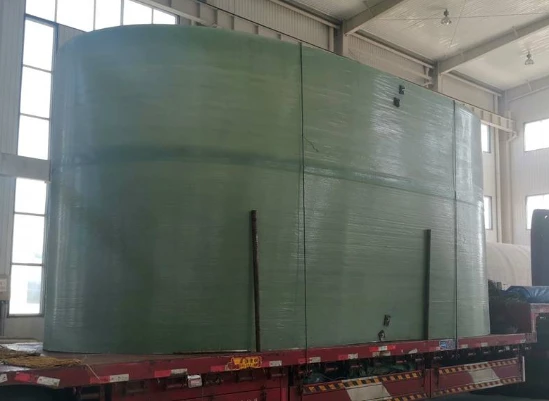
-
 Afrikaans
Afrikaans -
 Albanian
Albanian -
 Amharic
Amharic -
 Arabic
Arabic -
 Armenian
Armenian -
 Azerbaijani
Azerbaijani -
 Basque
Basque -
 Belarusian
Belarusian -
 Bengali
Bengali -
 Bosnian
Bosnian -
 Bulgarian
Bulgarian -
 Catalan
Catalan -
 Cebuano
Cebuano -
 China
China -
 China (Taiwan)
China (Taiwan) -
 Corsican
Corsican -
 Croatian
Croatian -
 Czech
Czech -
 Danish
Danish -
 Dutch
Dutch -
 English
English -
 Esperanto
Esperanto -
 Estonian
Estonian -
 Finnish
Finnish -
 French
French -
 Frisian
Frisian -
 Galician
Galician -
 Georgian
Georgian -
 German
German -
 Greek
Greek -
 Gujarati
Gujarati -
 Haitian Creole
Haitian Creole -
 hausa
hausa -
 hawaiian
hawaiian -
 Hebrew
Hebrew -
 Hindi
Hindi -
 Miao
Miao -
 Hungarian
Hungarian -
 Icelandic
Icelandic -
 igbo
igbo -
 Indonesian
Indonesian -
 irish
irish -
 Italian
Italian -
 Japanese
Japanese -
 Javanese
Javanese -
 Kannada
Kannada -
 kazakh
kazakh -
 Khmer
Khmer -
 Rwandese
Rwandese -
 Korean
Korean -
 Kurdish
Kurdish -
 Kyrgyz
Kyrgyz -
 Lao
Lao -
 Latin
Latin -
 Latvian
Latvian -
 Lithuanian
Lithuanian -
 Luxembourgish
Luxembourgish -
 Macedonian
Macedonian -
 Malgashi
Malgashi -
 Malay
Malay -
 Malayalam
Malayalam -
 Maltese
Maltese -
 Maori
Maori -
 Marathi
Marathi -
 Mongolian
Mongolian -
 Myanmar
Myanmar -
 Nepali
Nepali -
 Norwegian
Norwegian -
 Norwegian
Norwegian -
 Occitan
Occitan -
 Pashto
Pashto -
 Persian
Persian -
 Polish
Polish -
 Portuguese
Portuguese -
 Punjabi
Punjabi -
 Romanian
Romanian -
 Russian
Russian -
 Samoan
Samoan -
 Scottish Gaelic
Scottish Gaelic -
 Serbian
Serbian -
 Sesotho
Sesotho -
 Shona
Shona -
 Sindhi
Sindhi -
 Sinhala
Sinhala -
 Slovak
Slovak -
 Slovenian
Slovenian -
 Somali
Somali -
 Spanish
Spanish -
 Sundanese
Sundanese -
 Swahili
Swahili -
 Swedish
Swedish -
 Tagalog
Tagalog -
 Tajik
Tajik -
 Tamil
Tamil -
 Tatar
Tatar -
 Telugu
Telugu -
 Thai
Thai -
 Turkish
Turkish -
 Turkmen
Turkmen -
 Ukrainian
Ukrainian -
 Urdu
Urdu -
 Uighur
Uighur -
 Uzbek
Uzbek -
 Vietnamese
Vietnamese -
 Welsh
Welsh -
 Bantu
Bantu -
 Yiddish
Yiddish -
 Yoruba
Yoruba -
 Zulu
Zulu
fiberglass winding machine
Fiberglass Winding Machines Transforming Composite Manufacturing
In the realm of modern manufacturing, composite materials have become increasingly essential due to their lightweight, high strength, and corrosion-resistant properties. Among the diverse applications of composite materials, fiberglass plays a crucial role, particularly in industries such as aerospace, automotive, marine, and construction. Fiberglass winding machines serve as pivotal equipment in the production process, enabling manufacturers to create high-quality composite components efficiently and cost-effectively.
Understanding Fiberglass Winding
Fiberglass winding is a specialized technique that involves the application of fiberglass yarns or roving impregnated with resin onto a mandrel. The process results in a composite structure that is both robust and lightweight. The winding method can be tailored in various configurations, such as helical, concentric, or diagonal, depending on the specific mechanical properties required for the final product. This versatility highlights the importance of having advanced fiberglass winding machines that can accommodate different winding patterns and material specifications.
The Role of Fiberglass Winding Machines
Fiberglass winding machines automate the winding process, significantly reducing labor costs and enhancing production efficiency. These machines have advanced controls and mechanisms that allow them to precisely control tension, speed, and the angle of the winding. This precision is essential to ensure that the accumulated layers of fiberglass stay uniform, contributing to the structural integrity of the final product.
Several key components make up a typical fiberglass winding machine
1. Mandrel System The mandrel serves as the core around which the fiberglass is wound. Mandrels can be made from various materials and come in different shapes and sizes, depending on the end product’s requirements.
2. Spool Holders These hold the fiberglass roving or yarn, allowing for uninterrupted feeding into the winding process. The design and placement of the spool holders are crucial for maintaining the correct tension during winding.
3. Control System Modern winding machines are equipped with computerized control systems that allow operators to set winding parameters, monitor progress, and make adjustments in real-time. Some machines even offer the capability to store multiple winding programs for different products.
4. Resin Injection System Many machines integrate a resin injection system that ensures that the fiberglass is adequately impregnated with resin during the winding process. This step is critical for achieving optimal bonding and strength in the final composite material.
fiberglass winding machine

Advantages of Using Fiberglass Winding Machines
The benefits of fiberglass winding machines are manifold
- Efficiency Automated winding processes significantly reduce cycle times compared to manual techniques. This efficiency allows manufacturers to meet tight production schedules and increase output.
- Consistency With automated controls, each winding pass can be executed with the same parameters, leading to uniformity in the final product. Consistency is crucial in industries where safety and performance are paramount.
- Cost-Effectiveness Although the initial investment in advanced winding machines may be substantial, the long-term savings through reduced labor costs and waste can be significant.
- Customization Fiber winding machines can be programmed to create custom shapes and patterns, allowing businesses to offer tailored solutions to their clients and expand their product range.
Industry Applications
Fiberglass winding machines are utilized across numerous sectors. In the aerospace industry, they are employed to manufacture components such as fuselage sections and wing structures. In marine applications, these machines produce hulls and masts that are lightweight yet strong enough to withstand harsh marine conditions. Additionally, in the automotive field, fiberglass components contribute to lighter vehicles that improve fuel efficiency.
Conclusion
As industries continue to evolve, the demand for high-performance composite materials will only grow. Fiberglass winding machines represent a critical advancement in composite manufacturing, combining automation with precision to produce materials that meet the stringent demands of various sectors. As technology progresses, it is likely that these machines will feature even more capabilities, further enhancing efficiency and opening new avenues for innovation in fiberglass applications. Embracing the technology of fiberglass winding machines is essential for manufacturers looking to stay competitive in a rapidly changing landscape.









